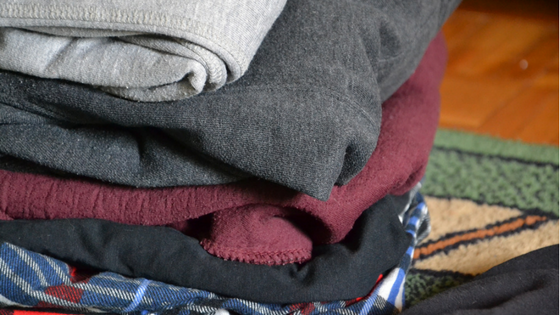
by Al Harsar
Gifts of property to charity throughout the year can result in beneficial tax write-offs. Noncash charitable donations are held to strict record keeping requirements, and the acceptance of the deduction depends greatly on the quality of records associated with the donations.
What items should I donate?
Clothing and household items are the most common types of items donated, but items must be in good used condition or better to qualify for a deduction.
Household items include:
- Furniture and furnishings
- Electronics
- Appliances
- Linens and other similar items
Household items don’t include:
- Food
- Paintings, antiques, and other objects of art
- Jewelry and gems
- Collections
Determining the Value of Donated Property
Used Clothing: The price that buyers pay in used clothing stores, such as consignment or thrift shops, is an indication of the fair market value.
Household items: The fair market value of used household items, such as furniture, appliances, and linens, is usually much lower than the price paid when new. According to the IRS, valuations should be supported with photographs, canceled checks, receipts from your purchase of the items, or other evidence.
Required Documentation
It’s important to keep records to prove the amount of the contributions you make during the year. The kind of records you must keep depends on the amount of your contributions.
- Deductions of Less Than $250: Keep a receipt from the charitable organization showing the name of the organization, date and location of the charitable contribution and a detailed description of the property. You are also required to keep a written record of each item, including:
- Name and address of the organization
- Date and location of contribution
- Description of the property in detail
- Fair market value of the property and the method of deriving the property’s fair market value
- The original cost or basis of the property (e.g. appraisal, thrift shop value, comparable sales, catalog)
- The amount you claim as a deduction for the tax year as a result of the contribution, if you contribute less than your entire interest in the property during the tax year
- The terms of any conditions attached to the contribution of property
Deductions of at Least $250 but Not More Than $500
At this level, it’s required that you get and keep an acknowledgement of your contribution from the qualified organization. In addition to the requirements listed above, the charity’s written acknowledgment must also include:
- A description of any property you contributed
- Whether the qualified organization gave you any goods or services as a result of your contribution and an estimate of the values associated with those goods or services.
Deductions Over $500 but Not Over $5,000
This level requires that you have all the documentation mentioned previously and also:
- A description of how you got the property (by purchase, gift, bequest, inheritance, or exchange)
- The approximate date you got the property
- The cost or other basis, and any adjustments to the basis, of property held less than 12 months and, if available, the cost or other basis of property held 12 months or more.
Deductions Over $5,000
If you claim a deduction of over $5,000 for a noncash charitable contribution of one item or a group of similar items, you must have the acknowledgment and the written records described above and also obtain a qualified written appraisal of the donated property from a qualified appraiser.
Corrigan Krause can help you determine fair market value on your items and make sure you are taking all necessary steps to claim the maximum allowable deduction.
